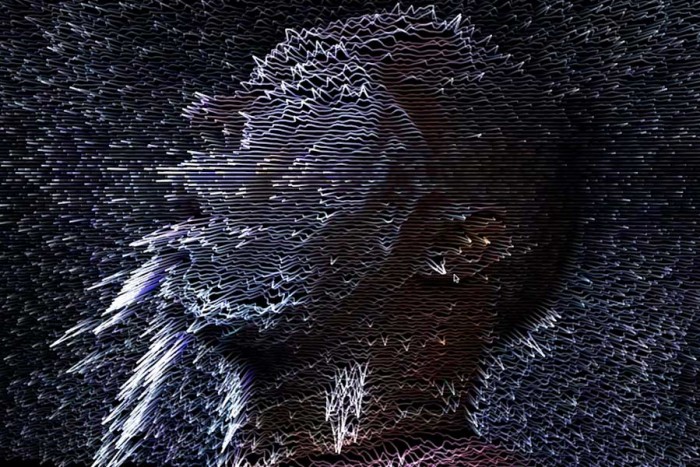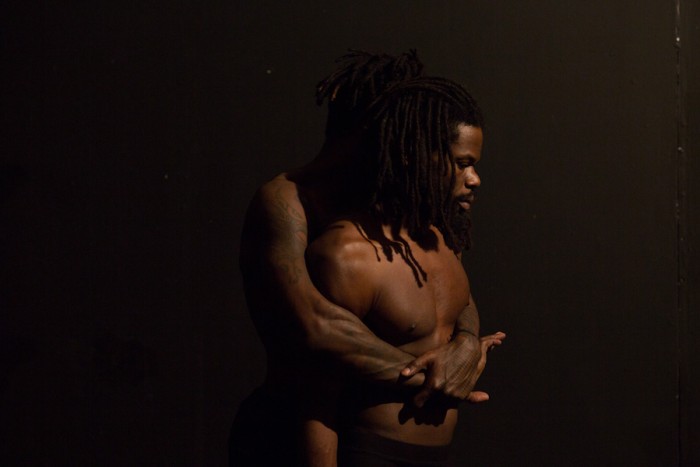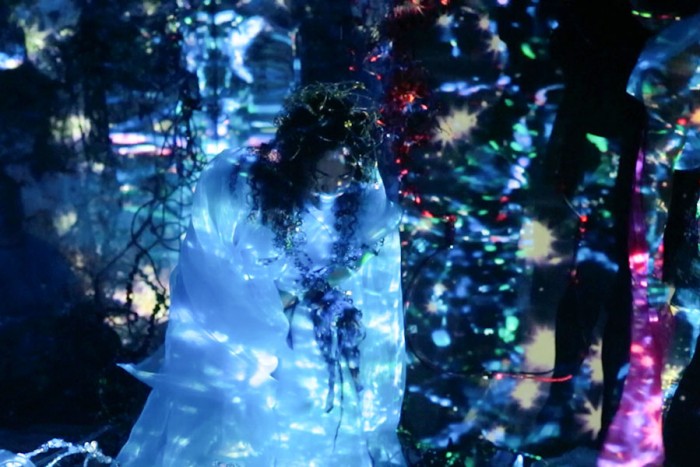
HOWDOYOUSAYYAMINAFRICAN?
There is no one way — that’s the joke. Though lately we have collectively been bombarded by one singular image of what it means to be black in this time and space.
Seated in a row of eight black chairs beside a group of white and Asian hipsters at the New Foundation Seattle, I watched the film “Good Stock on the Dimension Floor: An Opera” and had the welcome experience of seeing something different.
This 34-part film-poem that poses the question: “What happens to the black body when it is haunted by ‘a blackness,’ outside of it?”
Written by poet Dawn Lundy Martin, directed by Sienna Shields, and performed by the members of an interdisciplinary collective of international black artists that call themselves HOWDOYOUSAYYAMINAFRICAN? (HDYSYIA? or YAMS Collective), it is an abstract exploration of blackness.
The film debuted in New York in 2014 at the prestigious Whitney Museum Biennial and sparked a controversy when the Collective withdrew the film in protest. The Whitney has often been called out on its patriarchal preferences, notably by the Guerrilla Girls in 1987 and again in 1993 when they dubbed it the “Whitey” Museum for its tendency to feature almost exclusively white male artists.
When Shields was invited to screen the film, she chose to include the entire HDYSYIA? collective in part not to feel tokenized.
After seeing the film before it was withdrawn, Yoko Ott, Founding Director of the New Foundation Seattle approached HDYSYIA? about to screening it as an installation. This evolved into a residency where members of the collective gathered at Bear Creek in Redmond to prepare for their next exhibit in Rotterdam.
“I wanted the film to be shown here because I want the world to see those images with representations of black people that aren’t necessarily shown,” said Christa Bell, a Seattle based artist who’s a part of HDYSYIA?

Back at the New Foundation, the colors were vibrant against the white walled backdrop, each eye catching scene drew me, as did the resonance of the poetry.
“We’re a voice without echo, always present…”
Water, multicolored strands of beads, beats overlaid with fragmented poetry, birth, silence, struggle, release.
The film is a kaleidoscope of music, ceremony, dance, garbage, glitter, waving flags, dirt, light, and black bodies of various shapes, sizes, and genders in a variety of contexts and settings.
“Look what I’m holding, not desire but infinite multiplicity, the mouth of existence. What will we find in her cave?” the poetry asks us.
“At first it was hard for me to fall into what it was about. It was jarring and disjointed, so that kind of plot or streamlined story was inaccessible,” commented Julia Freeman who saw the piece three times, once at its Town Hall debut last month and twice at the New Foundation.
“I liked the nonlinear structure because it didn’t allow you to relax in a certain way into something familiar,” commented poet Storme Webber who also viewed the piece at Town Hall. “It seemed to disrupt this overbearing narrative that black people are this, especially in Seattle because if you ever read the comment section of the paper you realize how many stomped down, rednecked, Klan racists you live amongst.”
While I found myself fascinated, I also had that moment of wondering if it weren’t a bit over my head. I really wished I had been able to attend the Town Hall event to hear directly from collective members and even just to get a sense of how other people interpreted the images.
As it was in the intimate gathering of strangers, none of whom were black, I found myself uncomfortable, first from the tension of wondering if I were really understanding the art itself and then from the familiar tension of worrying about how white people would view this image of blackness. Even though it was written in 1908, Du Bois’ theory of double consciousness still resonates. I see myself and understand myself both through the private lens of my blackness and through the public lens of my American identity, which is inextricably intertwined with the dominant white culture.

“What if we saw ourselves as multiple dimensions as black folks? What if we redefined it?” asked Luzviminda Carpenter, an independent consultant who was hired to promote the event in communities of color. “It’s such a simple concept, but they did it beautifully.”
Carpenter’s comments brought to light one reason I found the piece challenging to process. What I witnessed in the art was a narrative of blackness completely avant-garde and so counterintuitive to the images I am accustomed to engaging with.
What images are those? It’s black history month again. Time to watch Roots and Eyes on the Prize. Blackness is grainy footage of protesters being fire hosed and attacked by dogs, MLK at the pulpit, Kunte Kente getting his foot chopped off, Beyonce in heels at a half time show. Violence, sex, sports. Not necessarily how I see me, but how I’m used to others seeing me.
“They opened with the tension and the expectation. You expect harm to be done to the black body,” explained Carpenter.
Viewing the work challenged me to name my own expectations and presumptions. It made me question my internal narratives.
“I was just deeply moved by the work. I just felt a real deep sense of connection and joy around the piece. Joy because I just felt like this is what I want to see black people doing,” said Karen Toering in response to the screening at Town Hall. “We don’t have a lot of really great experimental artists that are supported. So there was a real sense of joy that these young black folks felt totally fearless in their work. I found myself really falling in love with the cell.”
“Working in a collective has expanded my possibilities,” said Christa Bell. “When you’re working with a collective of people who are brilliantly creative there is a confidence that comes with that, not only because you’re not working alone, but because there is this brilliant brain trust.”
Upcoming Events:
“Good Stock on the Dimension Floor: An Opera” will continue to be screened on a loop at the New Foundation Seattle through March 28 (admission is FREE).
“Post Speculation/thewayblackmachine” is an interactive archive of the media of Ferguson designed by the YAMS Collective. It will be exhibited at the Jacob Lawrence Gallery at UW through February (also FREE).
“Last Night A DJ Gave Me Life: DJ as Revolutionary, Dance as a tool of liberation #Dancein #Ferguson.” co-Conceptualized by Christa Bell is February 7th, 9pm at On The Boards (Tickets are $10)
YAMS Collective member Mitch McEwen joins the Nebula Project Lecture Series, February 12, 7:00-8:00PM at the Henry Art Gallery (admission is FREE)

